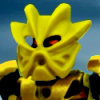
Presentation
From the design of the box to the instruction manual, these are the first things you see before building the set.
I just love the backgrounds for Time Cruisers and Time Twisters. They're so trippy and cartoony yet so dark and spooky. The castle and pirate ship in the background add a nice touch to the scenery and really help reinforce the idea that this theme was about visiting various periods in history. We also see Dr. Cyber and Timmy showing off various helmets and artifacts they've received throughout their travels, and the monkey, Ingo, is sporting a flintlock pistol. Isn't it dangerous to give firearms to a monkey?
Building
Half the fun is had building the set. How fun is it to build and how easy or challenging is it?
This set contains 234 pieces, and while there are large pieces like the bow and the stern, it still took me at least an hour to build, but the inner workings of the gears and axles for the functionality in this set were fun to construct. Because of this, the construction isn't straightforward, but it isn't incredibly difficult either; it just takes some time.
Set Design
Now that the set is complete, we can critique how it looks from every angle. New or interesting pieces can also be examined here.
The vessel is, obviously, built on the bow and stern pieces that come in the set. Interestingly, these pieces seem to be unique to this set! The Pirate sets from the late 80s/early 90s had bow and stern pieces, yes, but they were not of the same dimensions as those that appear here. I find that kind of odd, but cool. Also, this set is quite large and takes up a lot of space, partially because of the mast and partially because of the wings. The rudder/propeller system doesn't help either, since there's a large peg on which the small propeller sits.
This set comes with three figures: Dr. Cyber, Timmy, and Ingo the monkey, which is one short of the entire Time Cruisers cast.
I, the hard working Ingo, do not approve of my new simian form!
It also comes with several accessories, including a pirate hat and bandana, various helmets from other LEGO themes, a flintlock pistol, two crossbows, a magic wand, and a chainsaw. Because those things always go together.
Cower before my miscellany!
Needless to say, this set has a lot of good parts to plunder.
Playability
The other half of the fun is in playing with the set. How well does the set function and is it enjoyable to play with?
There's a Titanic reference here somewhere…
Like the other Time Cruisers/Twisters sets, this set does not disappoint on functionality. The wheels are connected by bars to the underside of the wings to make them flap up and down and are also connected internally to the axle that drives the rear propeller. The cockpit also opens up via hinge revealing a treasure chest and the control panel to the ship (which, interestingly enough, no one is operating in any photos of the set. Perhaps it's on autopilot?).
However, it's the look of the ship that really hooks me in. It's a pirate ship with wings and a periscope that is fueled by the spinning of a propeller hooked onto the stern. And also has wheels. That's just awesome! It's a vehicle that can practically go anywhere — swamp, mountain, ocean, canyon, and other locales that aren't in Majora's Mask. Bottom line: this set tickles the imagination and gives a lot of good opportunity to create your own Time Cruisers adventure, and that's why it's probably my favorite set of from the line.
Final Thoughts
Once it's all said and done, how does the set stack up? Should I get it?
Hold onto your helmets; time travel can be rough.
I love this set. It's a creative concept for a creative theme, and I wish they had done more sets like this. Not that the other Time Cruisers sets were bad, but they didn't quite stand out to me as much as this one. This vehicle can go on any journey anywhere, anywhen, giving the player nearly infinite possibilities as to where to send these characters, and that's pretty cool. Also, it has a plethora of cool pieces.
On BrickLink, you can find lots with this set at around $20 in Europe and around $30 in the US, which is not bad at all considering the original MSRP was $44 in 1996. If you have the cash, definitely consider this one, as it's a classic.
Pros
What's to like?
Functionality (again)!
Great pieces
Looks awesome
Not terribly expensive
Cons
What's not to like?
There aren't more like it in this theme.
If you were to get only one Time Cruisers set, I'd say get this one. It's a very imaginative set for an imaginative theme.
Now, I only have two more sets to do from the Time Cruisers/Twisters themes, so soon I will be moving on to some other LEGO theme from the 90s. Does anyone have any suggestions/a particular theme they would like to see? I could do Fright Knights, UFO, Adventurers (hecks yes), Insectoids, and others that I have with me but can't think of off the top of my head. Suggest away!
- Read more...
- 2 comments
- 737 views

